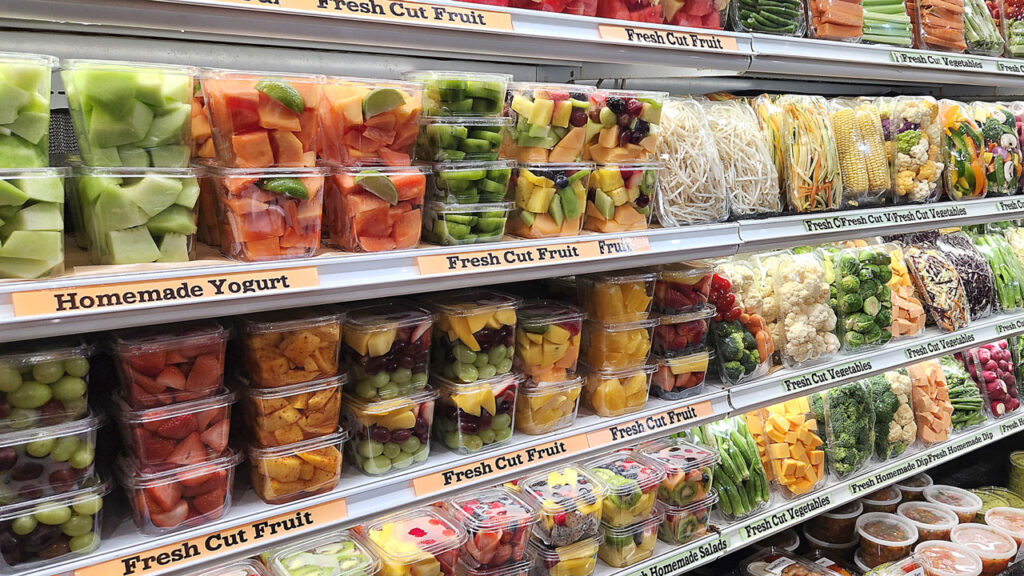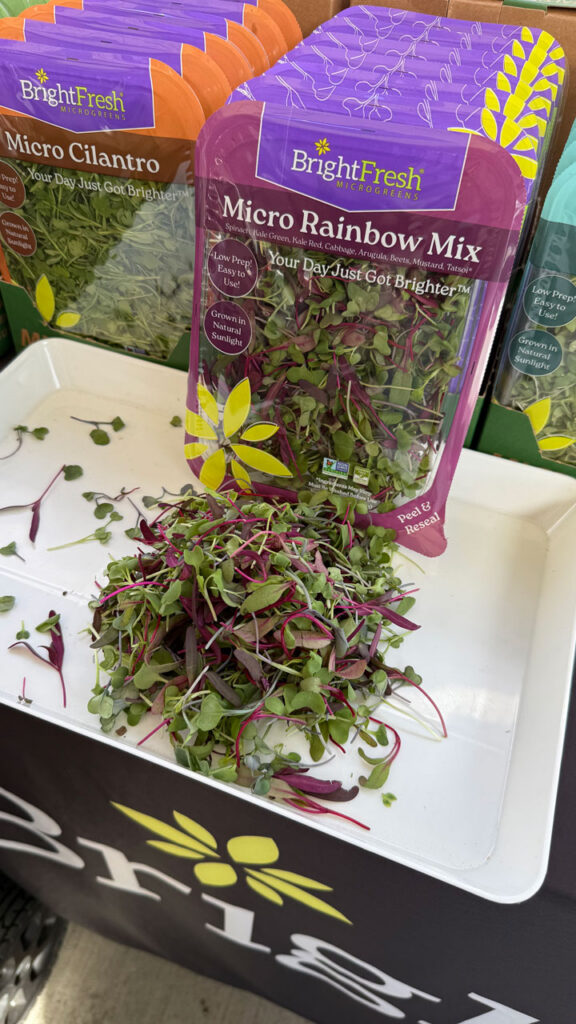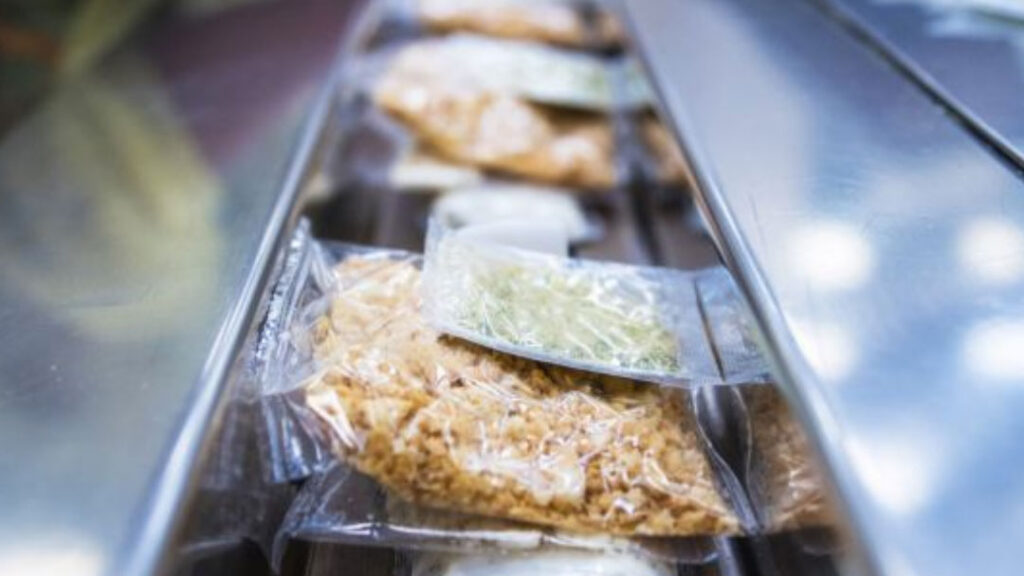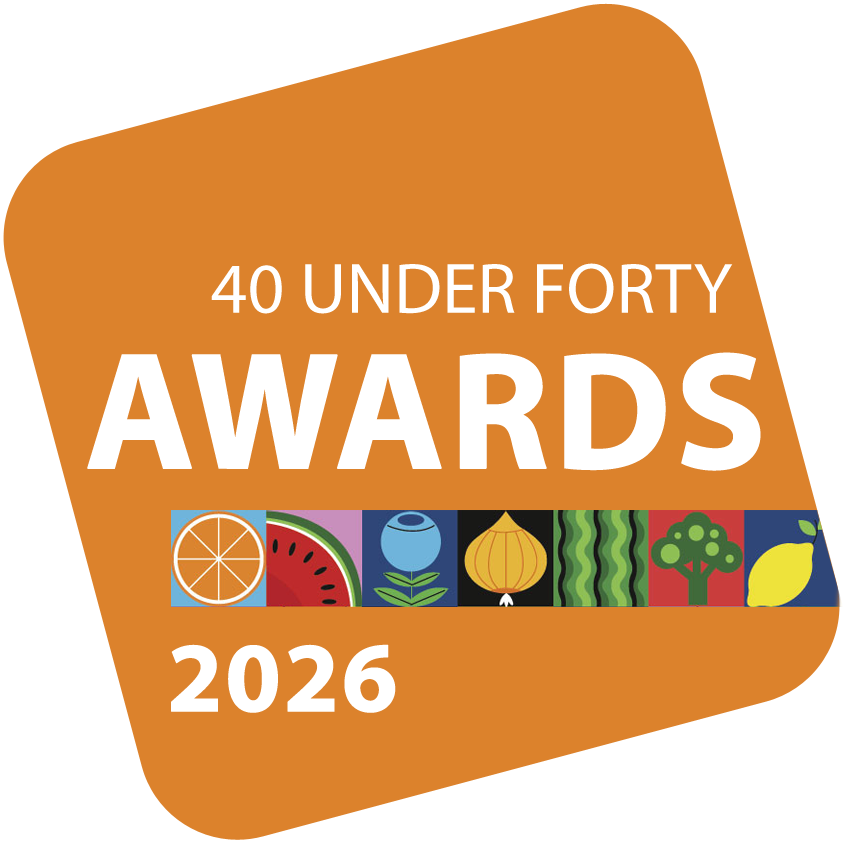The War on Plastic is Protracted
October 27, 2025 | 8 min to read

The search is on for produce packaging alternatives that spare landfills.
In the ongoing environmental war against plastic, plastic is winning. According to the U.S. Environmental Protection Agency (EPA), each year, more than 25 million pounds of plastic end up in landfills, where it persists indefinitely.
Alternatives to plastic may reduce trash entering dump sites or oceans, but they don’t always work as well with fresh produce, and the cost of reducing, reusing, or recycling enough plastic to make a difference is prohibitive.
“Everybody is in favor of sustainability, but nobody wants to pay for it,” says Steve Greenfield, director of sales and marketing at NNZ Packaging, Atlanta, GA.
According to the EPA’s latest estimate, released in November 2024, plastic generation increased from 25 million tons at the turn of the century to more than 35 million tons in 2018. And despite concerted efforts to promote recycling, less than 10% of that plastic was recycled in 2018.
Many state governments look to shippers using plastic packages to pay the cost of keeping the material out of the environment.
“Oregon, California, Colorado, Minnesota, and Maine already have extended producer recovery laws, and Washington and Maryland will soon,” says Greenfield. “In Oregon, the charge will be $1.40 a pound for plastic and 4 cents a pound for cardboard. It can cost a grower millions of dollars to ship.”
Package producers are faced with the challenge of learning to offer their customers the best alternatives under these new and varied rules, and Greenfield says they’ve had to hire a consultant to help navigate the regulations. “This all just started in the last two or three months.”
CONSUMERS PUSH CHANGE
Enough consumers have expressed a desire to see less plastic in produce departments to attract the attention of retailers and package makers.
“Packers and distributors are actively piloting more sustainable packaging, especially as pressure from both consumers and regulatory bodies increases,” says James Davidson, chief commercial officer at Genera, Houston, TX. “Retailers are using their buying power to push suppliers toward greener packaging, and packers are responding by exploring new materials, like fiber, that align with those goals.”
Genera produces Nature-Pack, a line of bio-based compostable packaging.
“Shoppers are willing to pay a little more when they feel their purchase is supporting a greater good, but the value must be obvious and authentic,” he notes, adding there are customer segments “that will increase loyalty to brands that are making the effort to reduce their impact.”
“When the sustainability story is clear and compelling, shoppers are willing to pay a little more when they feel their purchase is supporting a greater good, but the value must be obvious and authentic.”
James Davidson, Genera, Houston, TX
Century-old global management consulting firm McKinsey & Company, New York, NY, surveyed consumer attitudes about sustainable packaging in 2023. The survey revealed many customers are willing to pay a premium for products in sustainable packaging.

Some retailers have heard from customers that they would like to see less plastic in the produce department. “I’ve had customers say there is too much plastic in the salad mixes,” says Steve Mason, produce manager at Grove Market, Pacific Grove, CA. Grove Market is an independent store serving the affluent coastal town of Pacific Grove, which borders Monterey.
Given a choice between the sustainability of bulk produce and the convenience of plastic packages, customers differ in their preferences. “When the beans come in, some customers in their 90s will pick each one up, examine it, and make a decision, while other customers just like to grab-and-go, so they take the package,” says Karim Wahhab, produce manager, Draeger’s, Los Altos, CA.
Draeger’s is a small independent chain serving suburbs outside San Francisco.
THE CHALLENGE OF PLASTIC: IT WORKS
The stage would seem to be set for a quick transition away from plastic packaging in the produce department. Most consumers want to see less plastic, and many are even willing to pay more for alternatives. There have been attempts to find alternatives by package producers, and most retailers are aware that plastic packaging has become a sustainability issue for customers.
What’s holding back a packaging revolution? In produce, plastic still works.
“In the produce aisle, packaging is truly more about shelf-life and maintaining quality than it is about convenience,” says Helena Beckett, director of sales at BrightFresh Microgreens, San Marcos, CA.
“An important part of sustainability is utilization,” she adds. “We harvest our microgreens at the peak of quality and use micro-perforated resealable films to guarantee premium flavor profiles and a long shelf-life.”
Beckett notes that consumers expect packaging to protect quality and freshness. “Retailers are also focused on reducing waste and store shrink,” she says. “And, of course, the price must stay competitive for most consumers to make the purchase without hesitation.”
“The consumer will expect any packaging to maintain quality and shelf life. Retailers are also focused on reducing waste and store shrink.”
Helena Beckett, BrightFresh Microgreens, San Marcos, CA
Sustainable packaging must compete with plastic in keeping produce items fresh and safe. For some produce, visibility is essential because the package must let consumers see that the products look fresh and disease-free.
Plastic packages are particularly useful at preserving the freshness of produce that has been fresh-cut. “Anything we cut, we put in a package, but most of our customers like to pick their own stuff,” says Wahhab.
Retailers must navigate a maze of contradictory priorities for packaging. “Consumers want packaging that’s better for the planet, but they’re not going to compromise on ease and function,” says Steve Rosse, vice president of marketing, Genera.
At the same time, there is a need for packaging to reflect a brand’s values and tell a story, Rosse notes. “That’s where materials like ours really shine. We grow and make our packaging from grass here in the U.S., so it’s a sustainability story you can trace from seed to shelf.”
Compostable materials that break down take recycling to another level. “We focus on designs and raw materials that are both compostable and high-performance,” says Rosse.
The alternatives must work well and be economical if they are to be widely used in produce, says Genera’s Davidson. “Consumers are resistant to change, that’s why it is important for brands, packers and distributors to educate consumers about the changes.”
Plastic provides the best protection for the delicate greens produced by BrightFresh. “To date, I have not seen any alternative materials that protect fresh produce, as well as plastic in terms of maintaining quality and shelf-life,” says Beckett.
REDUCE, REUSE OR RECYCLE
There is no single alternative for produce retailers looking to replace plastic containers with alternatives that are just as functional and economical. One option is to offer more produce in bulk, with no consumer packaging at all.
Grove Market offers salad greens in bulk, as well as in the familiar hard plastic containers. Mason recalls one customer, seeing that the bulk clipped spinach was sold out, recoiled at the thought of buying the product packaged in plastic.
“Paperboard might cost twice as much as plastic, but you can make up some of it with less expensive dyes, which stamp the shape of the product,” says Greenfield.
Some strawberry shippers use cardboard packages rather than rigid plastic clamshells. For example, Watsonville, CA-based Sambrailo Packaging offers fiber-based cartons for strawberries.
Other shippers of vulnerable salad greens have also shifted to alternative packaging that reduces plastic without eliminating it. “To meet consumer expectations around sustainability, we transitioned to new peel and reseal packaging in 2024, reducing plastic waste by 25%, while still maintaining freshness and durability,” says Beckett.
Salinas, CA-based Taylor Farms reduces plastic using a fiber-based carton with a thin, clear plastic film for individually sized salads.
KNOW YOUR CUSTOMERS
The optimal mix of alternatives depends on what a retailer’s customer base wants, and what they are willing to pay for.
“We’re seeing strong interest in fiber-based alternatives, such as ours at Genera, especially as both consumers and brands become more aware of the long-term impact of plastic,” says Davidson. “Retailers and packers are looking for options that don’t just look sustainable, but truly are, from sourcing to end-of-life.”
A challenge for retailers is knowing the importance their customers place on reducing plastic pollution.
“In markets where consumers are vocal about plastic concerns and not cost-constrained, we see some packers and retailers testing paper or board-based packaging,” says Beckett. “If sustainability is a core value of the retailer and that is how they go to market, then, yes, they can get a premium price for more sustainable packaging.”
Leaders in Portion Packing, Innovation
While many in the produce supply chain are struggling to balance performance with sustainability, Latitude 36 Foods, Salinas, CA, has built packaging innovation into its DNA.
The company began in 1975 as a family-run business focused on portion-packed croutons for fresh-cut produce companies. “That humble beginning laid the foundation for something much bigger,” says Leslie Surber, president. “Today, we’re proud to be recognized as a national leader in portion packing, known not just for what we do, but how we do it — with innovation, reliability, and a spirit of collaboration that runs deep.”

Over the past seven years, Latitude 36 has leaned hard into packaging innovation, developing solutions from pillow bags and stand-up pouches to ready-to-eat trays. The company partners with private-label snack retailers to conceptualize and launch custom products.
Sustainability is a central priority. Latitude 36 works with partners to test recyclable films that meet emerging standards across North America. Several protein films are already fully recyclable, proving that environmental responsibility and performance can go hand in hand.
“At Latitude 36, we don’t just pack — we partner,” says Surber. “Every solution is tailored, every relationship valued. That’s what makes our work meaningful.”
1 of 16 article in Produce Business October 2025

